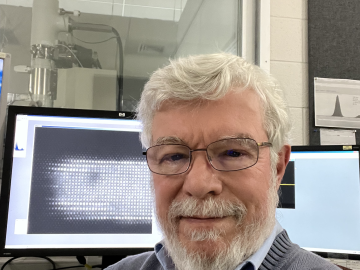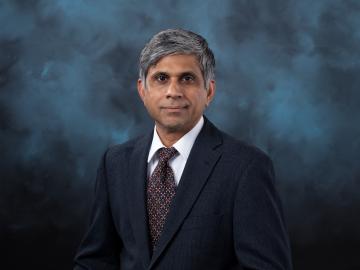
Filter News
Area of Research
- (-) Materials (92)
- (-) Supercomputing (52)
- Advanced Manufacturing (3)
- Biological Systems (1)
- Biology and Environment (49)
- Computational Biology (2)
- Computational Engineering (3)
- Computer Science (7)
- Electricity and Smart Grid (1)
- Energy Science (109)
- Energy Sciences (1)
- Functional Materials for Energy (2)
- Fusion and Fission (8)
- Isotope Development and Production (2)
- Isotopes (30)
- Materials for Computing (11)
- Mathematics (1)
- National Security (37)
- Neutron Science (31)
- Nuclear Science and Technology (12)
- Quantum information Science (4)
- Sensors and Controls (1)
News Topics
- (-) Biomedical (22)
- (-) Clean Water (3)
- (-) Critical Materials (15)
- (-) Cybersecurity (8)
- (-) Energy Storage (37)
- (-) Irradiation (1)
- (-) Isotopes (14)
- (-) Machine Learning (15)
- (-) Microscopy (29)
- (-) Security (7)
- (-) Space Exploration (5)
- 3-D Printing/Advanced Manufacturing (26)
- Advanced Reactors (5)
- Artificial Intelligence (39)
- Big Data (22)
- Bioenergy (18)
- Biology (14)
- Biotechnology (2)
- Buildings (8)
- Chemical Sciences (32)
- Composites (9)
- Computer Science (99)
- Coronavirus (17)
- Environment (35)
- Exascale Computing (26)
- Frontier (32)
- Fusion (8)
- Grid (9)
- High-Performance Computing (45)
- ITER (1)
- Materials (79)
- Materials Science (83)
- Mathematics (2)
- Molten Salt (3)
- Nanotechnology (42)
- National Security (8)
- Neutron Science (42)
- Nuclear Energy (20)
- Partnerships (11)
- Physics (34)
- Polymers (18)
- Quantum Computing (21)
- Quantum Science (33)
- Simulation (16)
- Software (1)
- Summit (43)
- Transportation (19)
Media Contacts

ORNL has been selected to lead an Energy Frontier Research Center, or EFRC, focused on polymer electrolytes for next-generation energy storage devices such as fuel cells and solid-state electric vehicle batteries.

Researchers at the Department of Energy’s Oak Ridge National Laboratory and their technologies have received seven 2022 R&D 100 Awards, plus special recognition for a battery-related green technology product.

Larry Allard, a distinguished research staff member at Oak Ridge National Laboratory, has been named a Fellow of the Microanalysis Society.

Researchers at Oak Ridge National Laboratory and Momentum Technologies have piloted an industrial-scale process for recycling valuable materials in the millions of tons of e-waste generated annually in the United States.

Researchers at ORNL are tackling a global water challenge with a unique material designed to target not one, but two toxic, heavy metal pollutants for simultaneous removal.

To optimize biomaterials for reliable, cost-effective paper production, building construction, and biofuel development, researchers often study the structure of plant cells using techniques such as freezing plant samples or placing them in a vacuum.

Jagjit Nanda, a distinguished staff scientist, has been elected a fellow of the Materials Research Society. The lifetime appointment recognizes outstanding members whose sustained and distinguished contributions to the advancement of materials research are internationally recognized.

Two decades in the making, a new flagship facility for nuclear physics opened on May 2, and scientists from the Department of Energy’s Oak Ridge National Laboratory have a hand in 10 of its first 34 experiments.

Researchers at Oak Ridge National Laboratory are using state-of-the-art methods to shed light on chemical separations needed to recover rare-earth elements and secure critical materials for clean energy technologies.

The Frontier supercomputer at the Department of Energy’s Oak Ridge National Laboratory earned the top ranking today as the world’s fastest on the 59th TOP500 list, with 1.1 exaflops of performance. The system is the first to achieve an unprecedented level of computing performance known as exascale, a threshold of a quintillion calculations per second.


